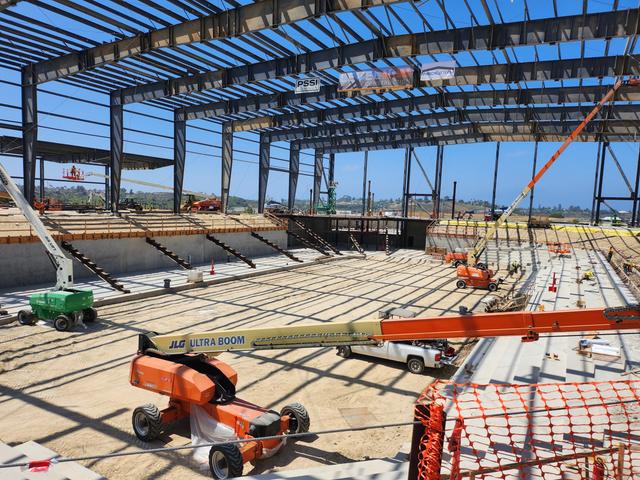Living with chronic pain can be an overwhelming and debilitating experience. It affects not only the body but also the mind, often diminishing the quality of life and restricting daily activities. While medications might offer temporary relief, they often come with side effects and do not address the root cause of the pain. In this scenario, physical therapy emerges as a powerful tool in the realm of pain management. Beyond its conventional association with injury rehabilitation, physical therapy plays a pivotal role in effectively managing pain, enhancing mobility, and improving overall well-being. In this blog post, we will delve into the multifaceted role of physical therapy in pain management, exploring its techniques, benefits, and its holistic approach to treating pain.
Understanding the Essence of Physical Therapy in Pain Management
Physical therapy, also known as physiotherapy, is a branch of healthcare that focuses on restoring and maintaining physical function and mobility. It encompasses a wide range of techniques designed to alleviate pain, improve flexibility, strength, and coordination, and enhance overall physical performance. Physical therapists, experts in human movement and function, work closely with patients to create personalized treatment plans tailored to their specific needs and conditions.
Tailored Treatment Plans: The Core of Pain Management
One of the most significant advantages of physical therapy in pain management lies in its individualized approach. Unlike generalized pain medications, physical therapy addresses the unique needs of each patient. A skilled physical therapist evaluates the patient’s medical history, current physical condition, and pain triggers to develop a comprehensive treatment plan. This plan might include a combination of exercises, manual therapy, modalities like heat or cold therapy, and education about proper posture and body mechanics.
Effective Techniques and Modalities
Physical therapy employs a wide array of techniques and modalities to target different aspects of pain. Manual therapy, such as massage and joint mobilization, helps to improve joint mobility, reduce muscle tension, and enhance blood circulation. Therapeutic exercises, including stretching, strengthening, and balance exercises, aim to restore muscular imbalances, improve posture, and increase overall body strength. Modalities like heat, cold, ultrasound, and electrical stimulation can also be used to alleviate pain and promote tissue healing.
Addressing Chronic Pain Conditions
Chronic pain conditions like arthritis, lower back pain, fibromyalgia, and neuropathy can significantly disrupt daily life. Physical therapy offers specialized programs to address these conditions. For instance, individuals with arthritis can benefit from gentle joint exercises to maintain mobility and alleviate pain, while those with lower back pain might undergo core-strengthening exercises to support the spine. By focusing on the specific needs of each condition, physical therapy provides a targeted and effective approach to pain management.
Holistic Approach to Pain Management
Physical therapy goes beyond the physical aspects of pain and takes a holistic approach to healing. Pain can often lead to psychological distress, anxiety, and depression. Physical therapists are trained to address these emotional aspects by providing support, motivation, and guidance. They educate patients about pain management strategies, relaxation techniques, and coping mechanisms, empowering them to actively participate in their healing journey. This holistic approach acknowledges the interconnectedness of the body and mind in the experience of pain.

Prevention and Long-Term Well-being
While pain management is the immediate goal of physical therapy, the benefits extend far beyond pain relief. Physical therapists emphasize prevention and long-term well-being. By identifying and addressing the root causes of pain, they help individuals avoid recurrence of pain and injuries. Moreover, physical therapy fosters healthy habits, encouraging patients to maintain an active lifestyle, engage in regular exercise, and adopt proper body mechanics. This proactive approach significantly contributes to a better quality of life and overall wellness.
Collaborative Care and Patient Empowerment
Successful pain management often requires a collaborative effort between healthcare professionals and patients. Physical therapists play a crucial role in empowering patients to take control of their health. Through education, guidance, and continuous monitoring, they equip individuals with the knowledge and tools to manage their pain effectively. This patient-centered approach not only yields better outcomes but also instills a sense of empowerment and self-confidence. Check out the official blog to get more important information about pain management.
Conclusion
In a world where chronic pain can feel like an insurmountable challenge, physical therapy stands as a beacon of hope. Its multifaceted approach, encompassing tailored treatment plans, effective techniques, holistic healing, and patient empowerment, makes it an indispensable component of pain management. Beyond the confines of medication, physical therapy addresses the root causes of pain, helping individuals regain their mobility, functionality, and zest for life. So, whether you’re recovering from an injury, dealing with a chronic condition, or seeking to enhance your overall well-being, consider embracing the transformative power of physical therapy as a key player in your journey toward effective pain management.





